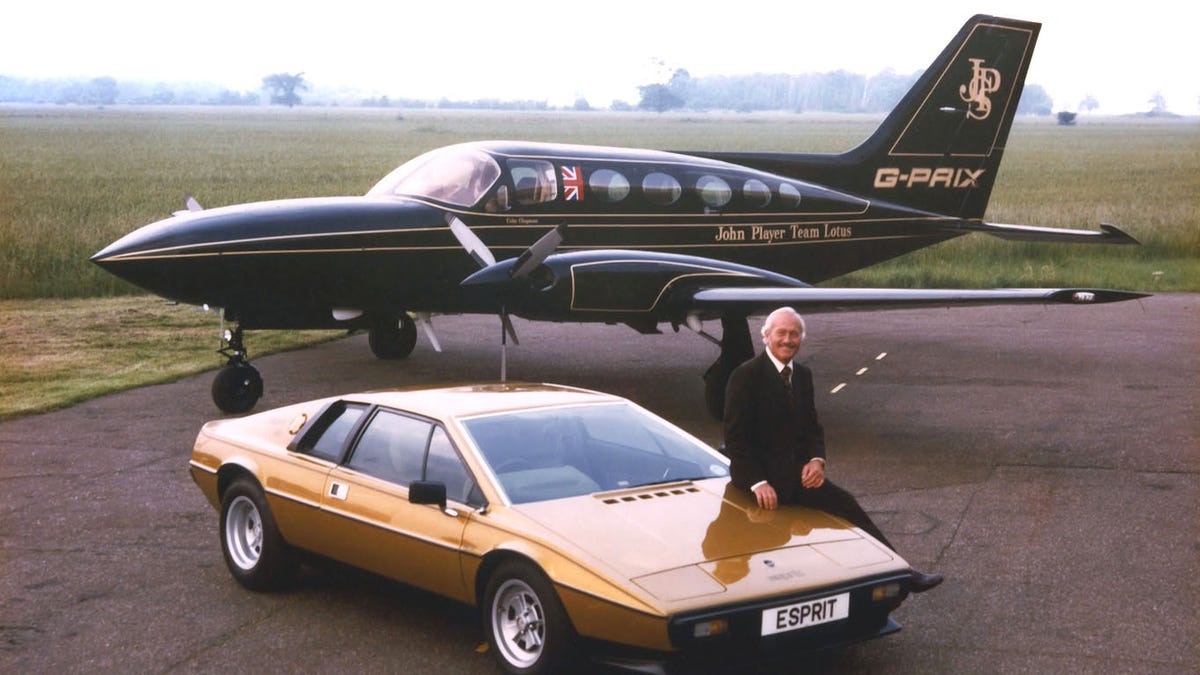Lotus founder Colin Chapman: The best and the brightest
Andrew Noakes profiles Lotus' founder and master engineer, Colin Chapman.

Any list of the greatest minds in the history of the car has to include Colin Chapman. He was the man behind Lotus, the prime architect of the Formula 1 car as it is today, and an innovator in road cars, aircraft, and even boats. He might have gone on to even greater heights had he not died at the age of just 54.
Chapman trained as an aeronautical engineer, but put his knowledge to use on four wheels. The first Lotus was an Austin Seven heavily modified for competition. It was so successful that Chapman was soon in business selling Lotus kits from a small workshop in Hornsey, North London, behind his father, Stan's, pub.
He soon gained a reputation as a talented structural engineer and suspension designer. Lesser engineers could be seen at car shows counting the coils in the suspension springs of new Lotuses in an effort to copy the design, but Chapman kept one step ahead -- by deliberately fitting show cars with the wrong springs.
It wasn't just his competitors who could be on the receiving end of his single-minded approach to racing. In 1962 buyers of the new Lotus 24, tickled pink at securing the company's latest and best single-seater, were dismayed to find a few weeks later that Team Lotus was racing an even more advanced car. That was the revolutionary Type 25, which introduced monocoque construction and a laid-back driving position to reduce frontal area.
That car established Chapman as the foremost F1 innovator of his era. A string of clever, effective F1 cars followed, each one outlined by Chapman and detailed by the talented engineers he attracted to work with him. Chapman's Lotuses had adjustable wings four decades before anyone heard of DRS, they perfected ground effect, and they pioneered active suspension.
His road cars were equally inventive. The Elite had a composite monocoque when most sports cars still had steel girders for a chassis. Lotus was one of the first to adopt four-valve cylinder heads. And the company invented a new vacuum-assisted process for moulding glass-fibre bodies.
By the 1980s Chapman's F1 cars had won almost as many Grands Prix as Ferrari -- in far fewer attempts -- and had chalked up five World Drivers Championships and six constructors titles. His road car company had produced a string of classics. Meanwhile, Chapman had put his engineering nous to work on innovative microlight aircraft and composite-hulled boats.
Though he always struggled with his weight, "Chunky" Chapman never looked less than fit. His death from a massive heart attack in December 1982 robbed motor racing of one of its most creative thinkers.
Just a few years later, Ayrton Senna was winning Grands Prix for Lotus, and the car company was backed by General Motors money. How much could a Chapman/Senna partnership have achieved? What could Chapman road cars have been like with an injection of GM cash? Sadly we'll never know.
Want to see what we thought of Colin's legacy? Check out the new Lotus Exige S.

